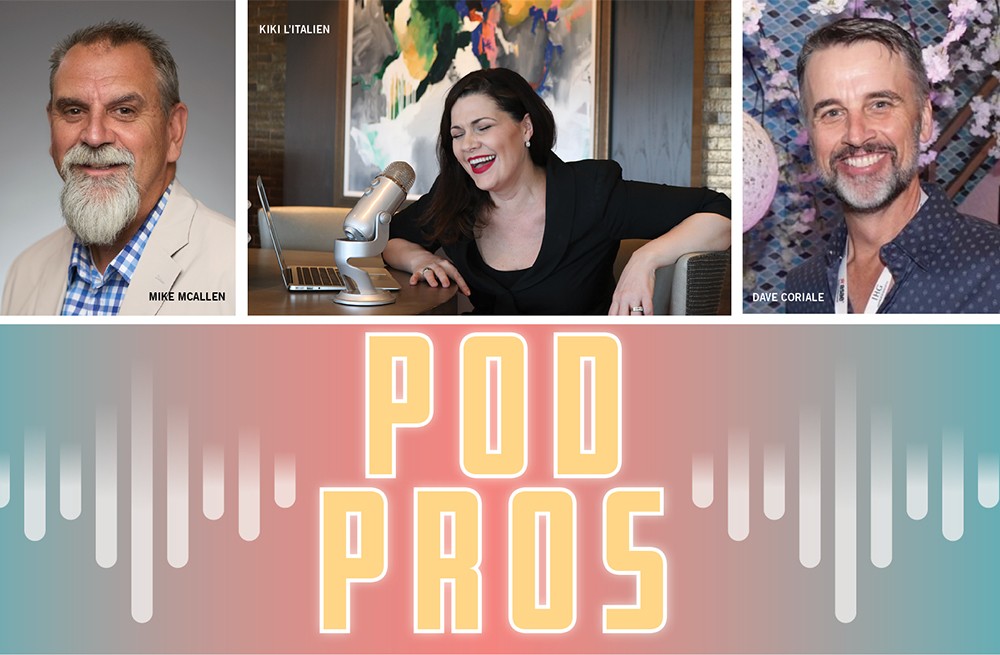Producing a podcast for your association can help expand membership—especially with younger prospects tuned into the medium—drive attendance to in-person meetings and bring home the bacon in terms of sponsorship revenue.
But where to begin? The association world is happily flooded with high-quality podcasts covering myriad topics in a segment that is already complex by its nature. In fact, there’s even a Society of Association Podcasters (SOAP) group on LinkedIn—a niche within a niche!
Meetings Today tapped three top podcasters who either cover or serve the associations segment to discover their secrets to success and potential roadblocks to avoid.
[Related: A Simple, Low-Cost Guide to Creating a Podcast]
KiKi L’Italien, Association Chat

Association marketing and podcast veteran KiKi L’Italien has produced the Association Chat podcast for seven years. Her Association Chat website maintains a comprehensive Association Podcast Directory with nearly 40 on the list to-date. L’Italien also publishes an Association Top Pods newsletter that lists her top five association podcast episodes of the week via a Spotify checklist.
L’Italien believes podcasts can establish an almost subconscious level of trust with listeners because of their format.
[Related: Are You on the Bus? Association Trends with KiKi L'Italien and Michael Buter]
“There’s research that shows that the ability to speak to somebody and be in their ear has more of a motivational effect to get them to act and do something than when they’re just simply reading it,” she said. “For a lot of people, when they’re listening to podcasts, it might be when they’re working out or when they’re in their car during a commute, or they might be on the train and listening in their earbuds. That ability for people to listen to you is something that creates an emotional connection that makes them trust the speaker more. That’s why advertisers want to be on podcasts, because they know the trust they convey, and they’ll have a higher percentage of sales as a result of that.”
As a producer of live-stream interviews for the association community for the past 13 years, L’Italien offers the following advice for those considering a podcast.
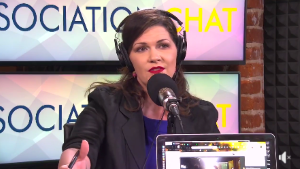
“You always want to start with what you think is sustainable. Don’t start a podcast unless you can really continue to feed it,” she said. “What kind of podcast is it going to be? Is it going to be full of interviews? Is it going to be a solo-cast, where it’s one person that is sharing, say, news or an update, or their perspective on something? Is it a podcast where it’s sharing a compilation of what’s going on in the industry and saying, ‘Okay, here’s the latest news,’ kind of like my newsletter of the top five podcasts.
“Then I would ask myself, ‘how are we going to make it happen?’” she continued. “Most associations don’t have an in-house production team to make the podcast happen, and that’s where people like [Podcasting4Associations’] Mike McAllen, or another company called Association Briefings, can help. They can create the podcast for you, do the production part and sometimes they’ll even host it.”
[Related: ASAE 2023: Thought Leader KiKi L'Italien Explores Key Issues Impacting the Association Segment]
L’Italien said any podcast producer needs to do the following:
- Establish a cadence (or decide if the podcast will have a finite, limited run) and segment the podcast into seasons, which allows for a break from the deadline pressure of a set schedule.
- Determine whether the broadcasts will be audio or video (or both).
- Dedicate the time to create a transcript, a laborious process that can be greatly aided by free AI programs such as Otter.ai. Transcripts are essential for optimal SEO and also to accommodate audience members who may have accessibility issues such as hearing difficulties.
- Insert time stamps via an AI solution such as Eightify (https://eightify.app) so highlights and summaries can be posted relatively effortlessly—as simple as copying and pasting—on social media or YouTube.
- Provide a blog post companion to the podcast that includes a summary of the episode and which can also be included in newsletters. Many potential listeners will first look at the summary to determine whether they want to dedicate the time to listen, or may only look at the summary.
- Put on your editor hat to rein in guests who want to provide an infomercial, which can be especially difficult with sponsored podcasts.
It’s also important to keep the length of podcast episodes reasonable.
[Related: Profile: KiKi L'Italien]
“If you want people to engage and listen, you really need to make shorter episodes, or cut up your long-form content into something smaller so it’s a little more digestible and easier for people to listen to,” she said. “And that’s just the truth. No matter how much we love the podcast host or the content, we just don’t have that much time.”
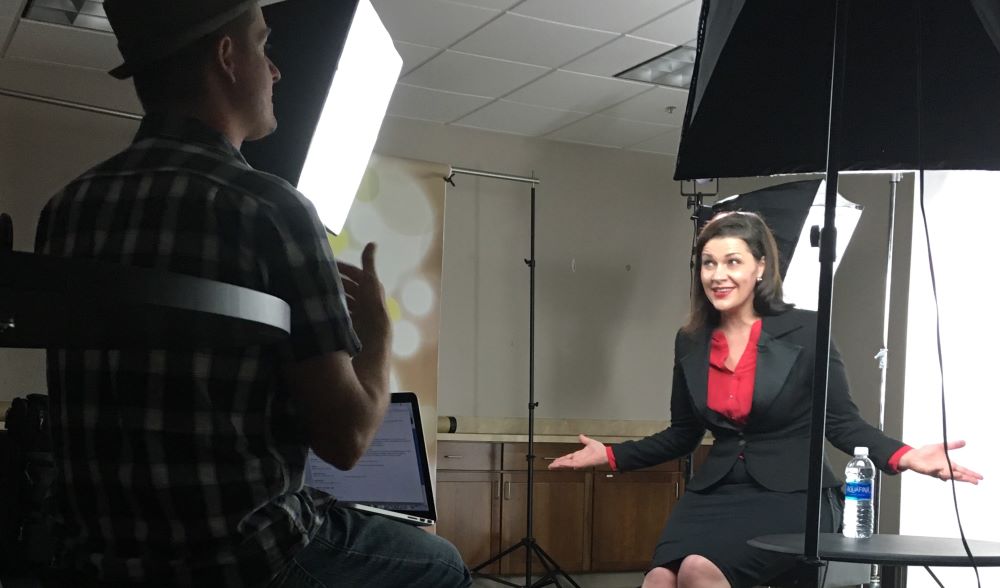
Mike McAllen, Podcasting4Associations

Mike McAllen’s Podcasting4Associations is a full-service production company that can provide soup-to-nuts service for associations wanting to get into the podcast game, including traveling to events to produce onsite. Major clients include the California Restaurant Association, American Academy of Pediatric Dentistry and tech giant AutoCAD.
“We produce podcasts onsite and go to their annual events and ancillary events. I’ll send somebody there to record podcasts but we also do a lot of stuff virtually,” he said.
Podcasting4Associations walks virtual clients through the process, including mailing mics for them to produce more-professional audio and then mail the mics back.
Podcasts are especially valuable for associations, McAllen stressed, which are always striving to engage existing members and draw in new ones.
[Related: Profile: Mike McAllen]
“They want to be in their members’ pockets all the time, right? They want to keep relevant,” he said. “You can go and listen to a podcast when walking your dog or washing the dishes. It’s less screen time when commuting, and they can keep up to date with the industry. And then the other thing is, they can repurpose that into social media by slicing and dicing it afterwards.”
Podcasts can be great revenue generators, too, because if the demographic is particularly juicy—such as doctors or others in lucrative or influential fields—even podcasts with smaller audiences can bring in significant sponsorship dollars. McAllen recounted a client who sold $30,000 in sponsorships per episode even though it only received a modest 500 downloads on a good show.
“When they told me that I was flabbergasted,” he said.
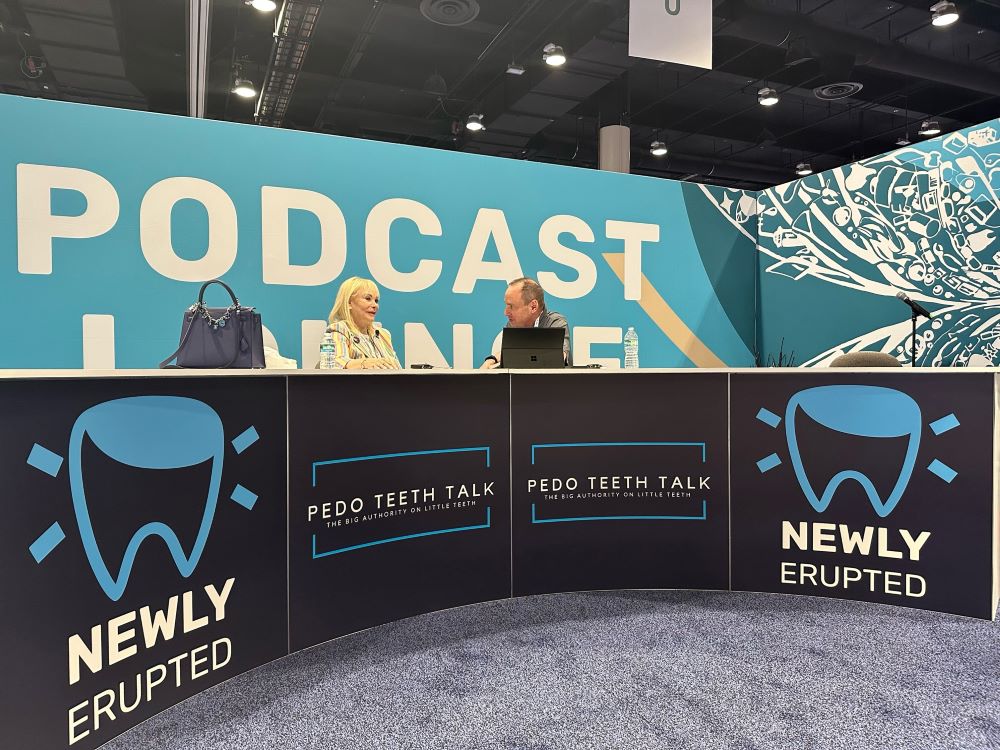
David Coriale, DelCor (Reboot IT Podcast)
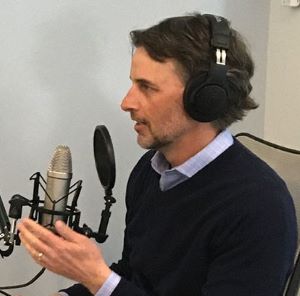
David Coriale, president of 501(c)(3) association and nonprofits technology consulting company DelCor, was an early adopter in the association podcast game 20 years ago when he was the interim CIO for the American Society of Plastic Surgeons. Coriale also founded the SOAP LinkedIn group.
While it may seem everyone and their uncle has a podcast these days, Coriale said organizations should have a firm idea of why they want to accomplish one before embarking on the journey. FOMO shouldn’t drive a decision to join the podcast pack.
“The first question is the most important one: ‘Why are you doing it and how will you consider it a success?’” he said, “even if it’s just an experiment.”
Coriale stressed that no matter the reason for launching a podcast, basics such as audio quality are key.
“I’ve learned to always make sure guests have good audio equipment, because one of my success factors is sound and production quality,” he said. “It’s so annoying when you listen to a podcast and one person’s volume is low and the other one’s high and you have to keep adjusting your volume. Pay attention to your production quality and test your mic levels.”
And if guests don’t have an adequate mic, either send them one or show them some relatively inexpensive mics they can purchase on Amazon.
Keeping control of the flow of the discussion is also key.
“I’ve learned some guests are harder than others,” Coriale said. “They seem like perfectly nice people, but getting them to actually answer the question you just asked is impossible, so you have to be skilled at redirecting and being affirming as a host. I’ve learned it’s all about the guests, not about you. Your job if you start one is to make your guests seem like the smartest person in the world about that topic during that podcast.”
To help keep things on track, Coriale recommends scheduling a 15- to 20-minute prep call during which participants can share a document on screen and build bullet points, with the goal of trying to keep the broadcast under a half hour.
About the ideal length of time for a dog walk, coincidentally?
A Very Handy Tool
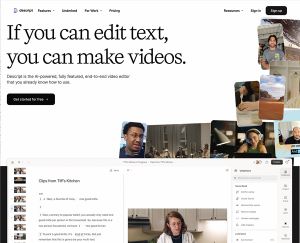
All of the podcast professionals interviewed for this story recommended a remarkable AI audiovisual editing tool named Descript, which makes the typically laborious task of editing a breeze by allowing users to simultaneously edit the synched transcription and video or audio files merely by editing the text.
L’Italien said Descript’s AI can even automatically edit video to make one’s eyes look directly into the camera when reading off a script, and can also do a search and delete to eliminate pesky filler words such as “um” that are the bane of any broadcaster.



